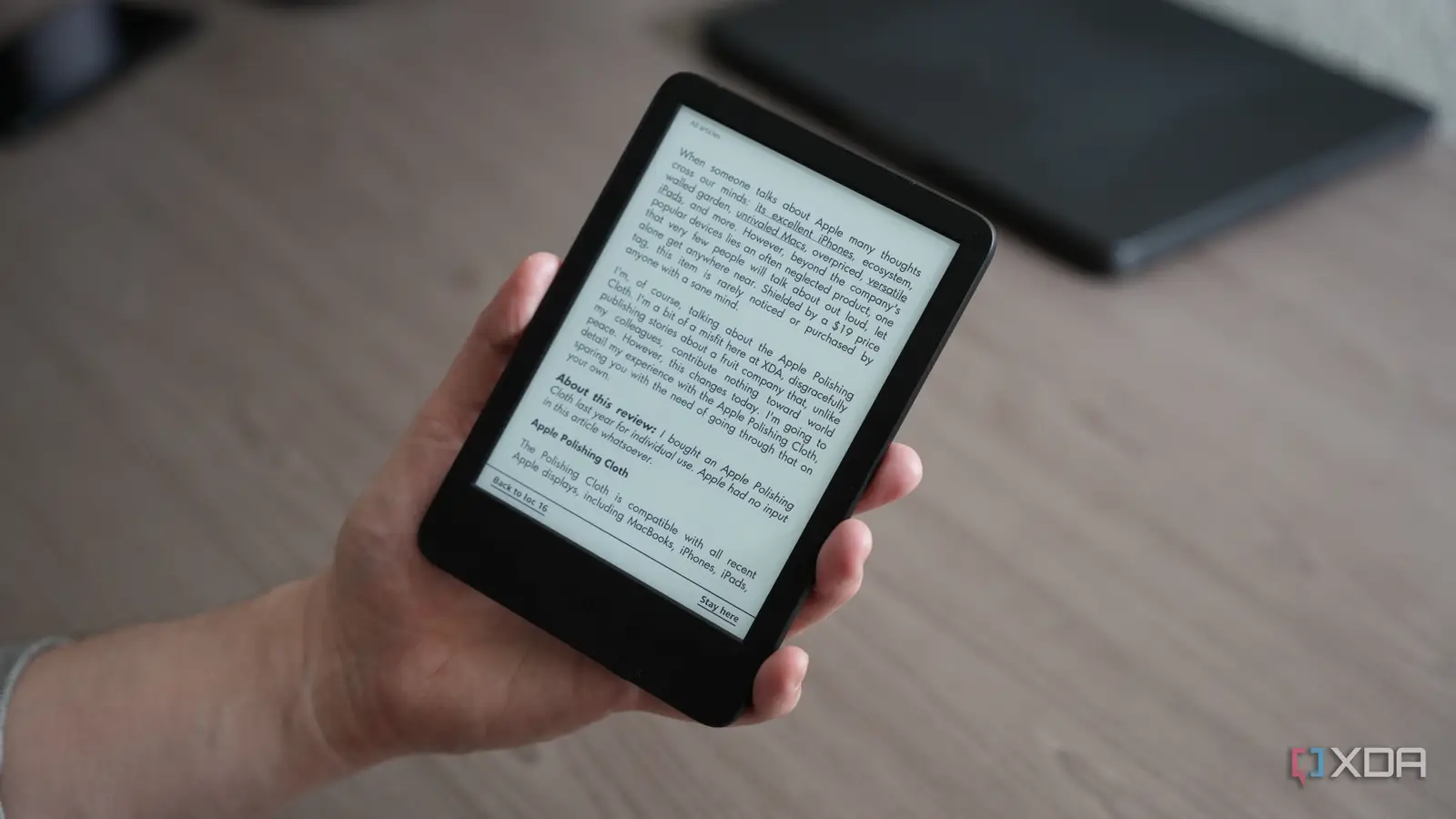
When I was thinking about getting my first e-reader, I kept coming back to the same question: why not just get a tablet? After all, a tablet, like an iPad, can do a lot more than an e-reader. And what about e-ink notepads like the ReMarkable tablet? They’re more expensive than e-readers, but offer more versatility for note-taking and annotating what you’re reading.
Choosing between all three options can seem like a losing battle, but ultimately, I think it comes down to ranking three tasks: reading, note-taking, and drawing. Yes, there’s definitely some overlap between these three types of devices, but each is the best at one of those three things. So, if you rank what you most want from this device, you can pick the right one.
Here’s a quick look at what e-readers, e-ink notepads, and tablets excel at to get you started and hopefully make your search a lot easier.
E-readers: The most convenient option for reading books
The easiest and most versatile way to read your e-books
I used to find e-readers overrated, wondering why you would want to spend so much money on digital books rather than physical books. That is, until I finally picked up a Kindle on sale and gave it a try. Now I’ve upgraded to a much nicer Kobo e-reader, the Kobo Clara BW, and I finally get it: e-readers are the ultimate device for reading books.
I’m being specific about books here. Regardless of whether you go with a Kobo or Kindle, you’ll have easy access to digital stores for buying new e-books or checking them out from your local library. Technically, you can add PDFs to your Kindle or Kobo, but the formatting can be a bit wonky depending on how the PDF is laid out. Plus, most e-readers are designed only for reading, with very limited notetaking or annotating capabilities. That can be a good thing, though—it means you get distraction-free reading, which isn’t usually feasible on a tablet.
Plus, on a tablet, you don’t have as much freedom with your books. At the time of writing, Kobo still allows you to freely import and export your e-books from your e-reader, meaning you can add books to your Kobo from any other shop or source you want. On the Kobo app (what you would be reading with on a tablet), you’re limited to only books you’ve purchased from the Kobo store.
As of a policy change in 2025, Kindle e-books can only be read on Kindle e-readers or the Kindle app. So, I suggest choosing a Kobo e-reader and purchasing e-books from the Kobo store instead, so you can freely back up and export your library.
Additionally, if you live in a small apartment like I do, a Kobo or Kindle allows you to get new books without worrying about limited bookshelf space. E-readers are also fantastic for traveling with thanks to their portability. They can also be ideal for readers with vision challenges since you can freely adjust the font and text size on an e-reader. Don’t forget about battery life, either. E-readers can last weeks on a single charge, while a typical tablet will probably struggle to last a few days between charges.
So, if you mainly want a device for reading books (not PDFs or notes), an e-reader is the way to go.
E-ink notepads: a tablet that’s great for focusing on your notes
The display of an e-reader with the writing capabilities of a tablet
You may not be familiar with e-ink notepads yet, but they’ve been getting more popular over the past few years, especially ReMarkable tablets. Their latest model, the Paper Pro Move, is small enough to use with one hand like a pocket notepad, an e-reader, or a phone. E-ink tablets have the same type of display as e-readers, but with the functionality of a notebook.
Don’t let the e-ink display fool you, though. I wouldn’t suggest an e-ink tablet if you mainly want a device for reading. A Kobo or Kindle has easy access to an e-book shop, but that’s not always the case with e-ink notepads. For instance, ReMarkable tablets have no way to directly connect to e-book marketplaces, at least at the time of writing. Boox e-ink tablets have access to the Google Play Store, so you can use the Kobo or Kindle Android app, but side-loading and backing up your ebook library isn’t as straightforward as it usually is on an e-reader.
Where e-ink tablets really shine is in note-taking and annotating. These tablets are a great alternative to paper notebooks or file folders, making them fantastic for studying. They also offer a way to read PDFs and other documents on a screen that’s not hard on your eyes and allows for easy annotation without requiring a physical paper copy of your documents. You get the larger screen and hand-notetaking capabilities of a tablet without the distractions of a tablet. Plus, like e-readers, the e-ink display allows these notepads to have a much longer battery life than a regular tablet (although sometimes not quite as long as an average e-reader’s battery life).
So, if you’re mainly reading PDFs, textbooks, and documents or want a device mainly for note-taking, an e-ink notepad is probably the best option.
Tablets: the do-it-all device that’s great for drawing and entertainment
You can’t beat an iPad or a Wacom tablet for art and design
Tablets can do the same things an e-reader or e-ink tablet can, but they’re better and worse in some ways. For the sake of comparison, I think the iPad Mini is probably the best alternative to an e-reader or e-ink tablet due to its small size and versatility. I love the iPad Mini, but I wouldn’t replace my e-reader with one, and vice versa.
There’s one thing tablets are particularly good at that e-readers and e-ink tablets aren’t ideal for (or can’t do at all): drawing. Tablets like an iPad or a Wacom Movink Pad can be fantastic for art, with full-color displays and pens designed with drawing in mind. There are even screen protectors out there for giving the display a more paper-like feel. An e-reader can’t compete with that at all, and even a color e-ink tablet isn’t going to be as functional for art and design as a tablet, even though both devices are often paired with a pen.
Tablets are obviously great for a lot of other things, like streaming or gaming, which e-readers and e-ink tablets can’t do. However, in my experience, they’re not as good for reading as e-readers are. Even the iPad Mini is heavier than my Kobo, and I prefer the Kobo’s e-ink display for long reading sessions. You can definitely use a tablet for reading, it’s just not as good at it as an e-reader.
So, if you want a device primarily for drawing or an all-in-one device, a tablet is the way to go.
Reading, writing, or drawing: Choosing the right device for you
In short, an e-reader is best suited for reading books with minimal annotation or note-taking. An e-ink notepad is best for taking notes or reading PDFs, textbooks, and documents. A tablet, like an iPad or Wacom Movink Pad, is best for drawing or as a do-it-all entertainment device.
By ranking how important reading, note-taking, and drawing are to you, you can pinpoint the best device for your needs. Each has its pros and cons, but don’t opt for a tablet just because it has the widest range of capabilities. Sometimes a more focused device, like an e-reader, is better for concentrating on one specific task or getting the best possible experience with that task.



